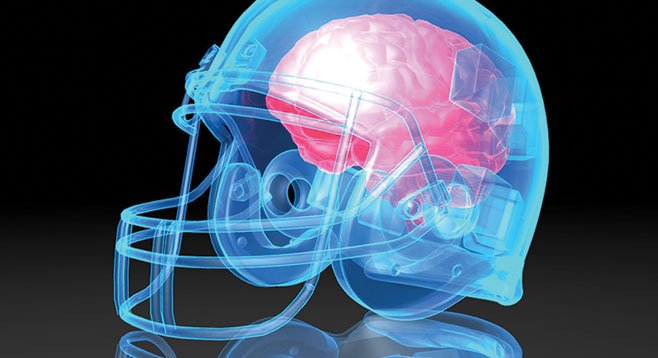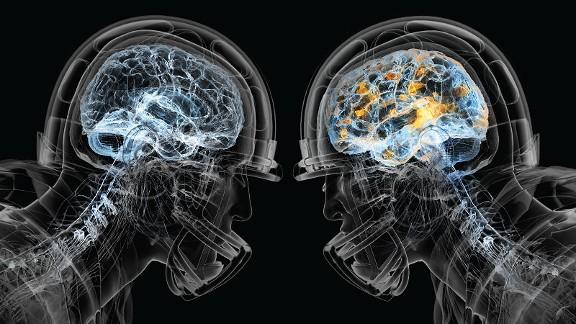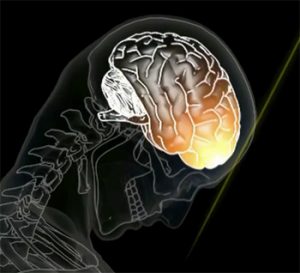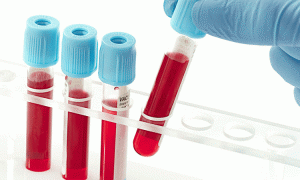An Injury You Can’t See
A concussion can affect anyone anywhere at any time. One can walk from their house to their car, slip, and hit their head on the ground. A football player can go into the game winning tackle with a hit that went wrong. A concussion alters the most important thing in one’s body, the brain.
A concussion occurs when the brain is moved rapidly causing the brain issue to change. This damage can cause chemical and metabolic changes in the brain cells. An ionic flux and glutamate release during this energy demands. This can cause a voltage- or ligand-gated ion channels to create a “depression-like” state. This change is the reason for post concussive impairments. The proper function of these gates are crucial for proper communication between cells.
A Love that Can Break the Heart
Children grow up finding a hobby to fall in love with. Even if people don’t continue to play them after high school, college or semi-professional they can always watch. In a study of a high school football team over a length of a season, a reduction of white matter in the brain was present. The white matter of the brain is vital for having a high abundance of neuron fibers. These neuron fibers are important for sending signals in the brain. Unfortunately, even at the young age of 14-18 there is an alteration in the brain. Around 300,000 concussions are diagnosed yearly in high school athletes from girls soccer to boys lacrosse.
One sport, football is a beloved sport of the United States. This loved sport is seen to have a high risk of chronic, long-lasting effects on the athlete. CTE, chronic traumatic encephalopathy, is a degenerative disease due to repetitive brain trauma. This long-term brain injury seen in hundreds of NFL players is due to hundreds of blows to the head. Symptoms such as: cognitive impairment, depression, emotional instability, and memory loss may appear a few years after hits. Post-mortem, Boston University found 110 of 111 brains donated by NFL families had CTE. Oxidative damage to these proteasomes can occur just hours after a single hit causing the accumulation of tau protein clumps in an organized formation in the patient’s brain. These tau proteins are found in high abundance in the NFL brains studied by Boston University.
For more information: https://www.bu.edu/research/articles/cte-former-nfl-players/
A Hope for Future Technology
When conducting for the presence of a concussion, the lack of concrete detection available is concerning. Unfortunately, there is not a rapid test to help answer this but a new possible blood test is emerging. Blood tests look for ubiquitin carboxy-terminal hydrolase-L1 and glial fibrillary acidic protein that are present during the first twelve hours after a traumatic brain injury was just FDA approved in February 2018. Until this becomes readily available, the continuation of the IMPACT test will be the first test after a thought to be concussion.
Preventative technology is being produced quickly. New helmets for football players detecting the force, direction, and number of hits are making their way onto college and NFL players heads. The hope it to make the game safer for everyone and reduce the long-term effects.
Mouth guards with sensors in them to calculate the force are also making their way onto the field. Not only is there research and preventative care going on the soccer, football, lacrosse, etc. but also in the battle field. New patches that detect the force an individual experiences near an explosion are becoming more popular.
While, the best remedy for a concussion is still rest, reduction in stimuli, and sleep, there is hope for a more effective and faster elimination of the damage to one’s brain.
References:
- https://www.sporttechie.com/q-collar-bauer-neuroshield-concussion-prevention-canada-brad-keselowski/ ▲
- https://www.aafp.org/news/health-of-the-public/20180223concussiontest.html
- http://prevacus.com/concussions-101/statistics/

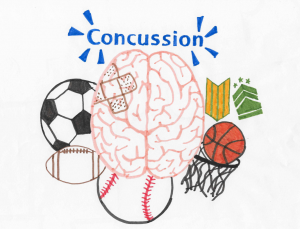
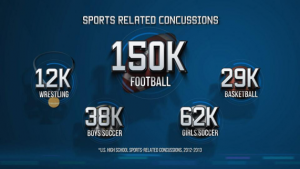
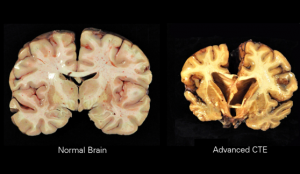
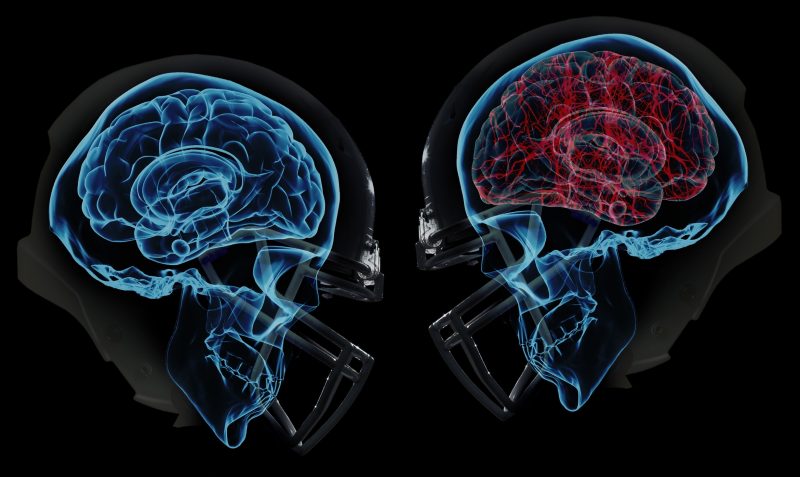
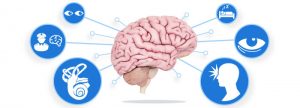
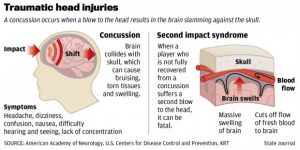

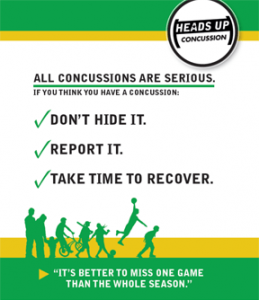
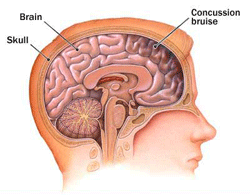
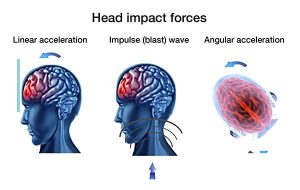
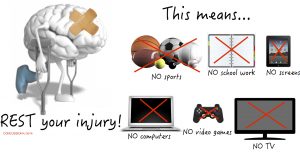
 familiar with the initial symptoms associated with concussions like headaches, memory issues and sensitivity to light; however, there are chemical changes happening in the brain to cause these symptoms and can explain long term changes that happen to one’s brain after a concussion.
familiar with the initial symptoms associated with concussions like headaches, memory issues and sensitivity to light; however, there are chemical changes happening in the brain to cause these symptoms and can explain long term changes that happen to one’s brain after a concussion. rest is the best way for one’s brain to recover from a concussion. This entails resting both physically and mentally which may include eliminating screens, reading, working and driving for a certain amount of time.
rest is the best way for one’s brain to recover from a concussion. This entails resting both physically and mentally which may include eliminating screens, reading, working and driving for a certain amount of time.
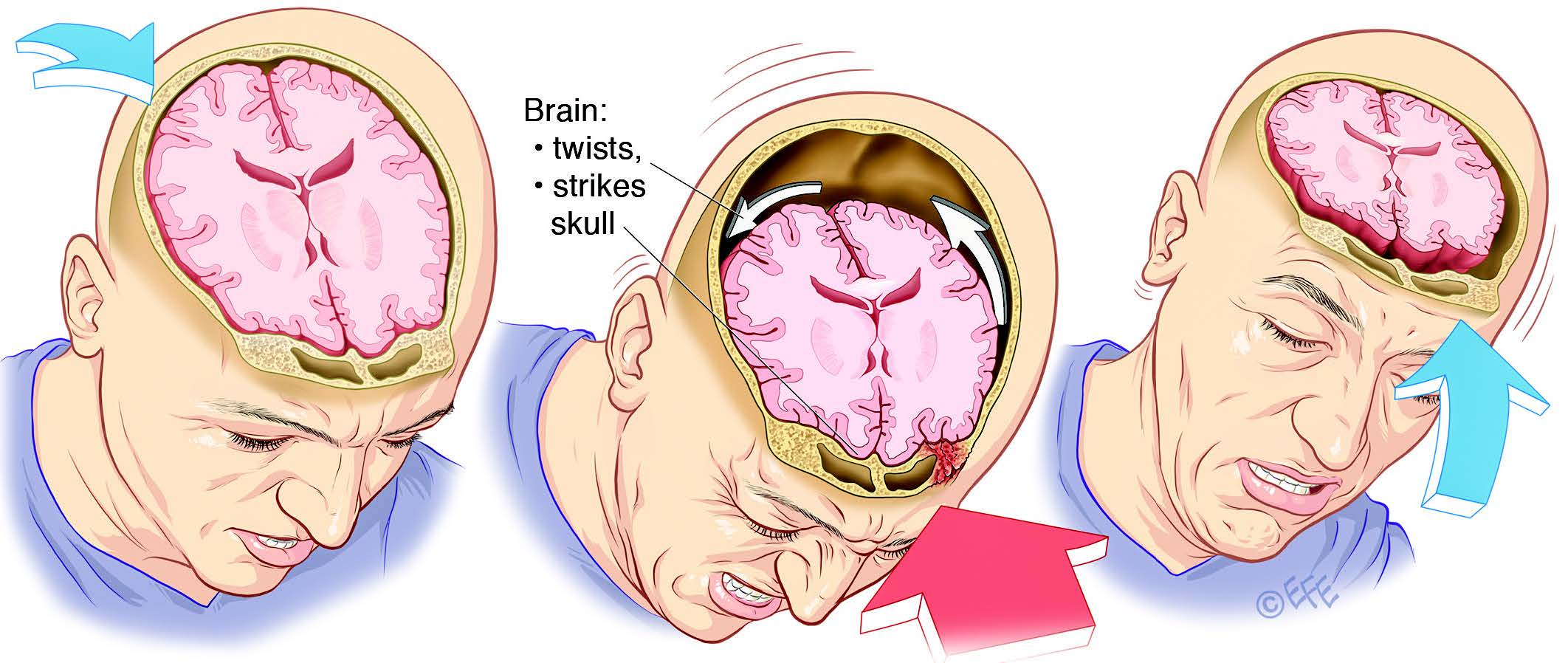

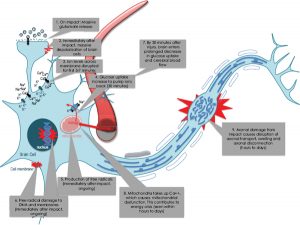





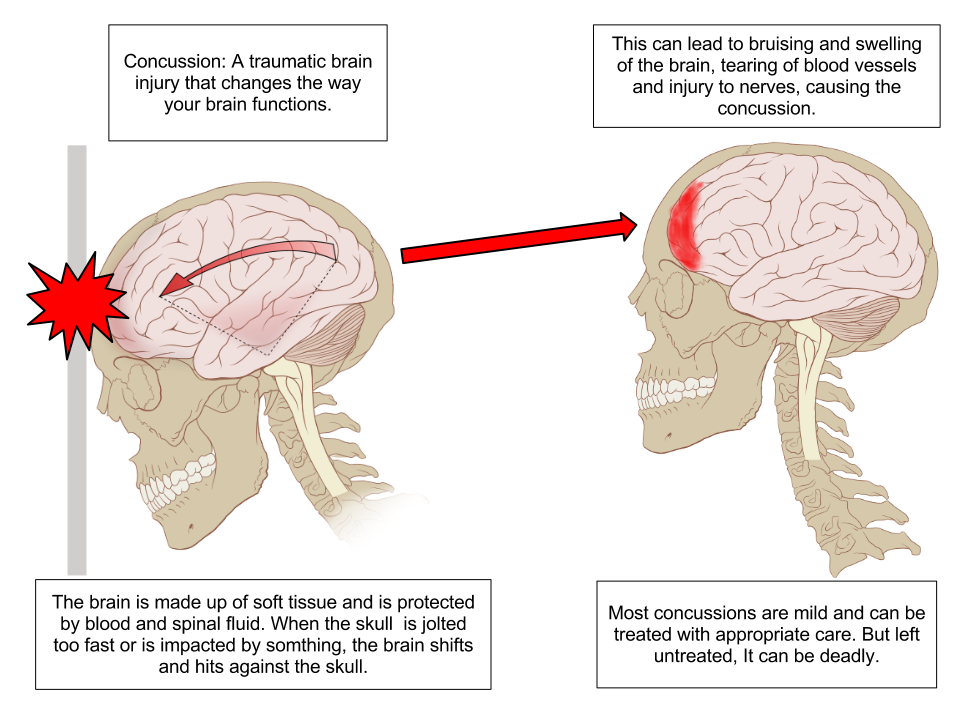 possible skull deformation. Depending on the force, position and angle of contact,concussions can vary in severity and symptoms. Typical symptoms stem from a cascade of molecular events inside the brain that shift from normal function. Balances of major ions in the brain like potassium, glutamate, and calcium are shifted during concussions, requiring energy in the form of ATP to return to homeostasis. This in turn calls for an influx of glucose to provide the ATP to the
possible skull deformation. Depending on the force, position and angle of contact,concussions can vary in severity and symptoms. Typical symptoms stem from a cascade of molecular events inside the brain that shift from normal function. Balances of major ions in the brain like potassium, glutamate, and calcium are shifted during concussions, requiring energy in the form of ATP to return to homeostasis. This in turn calls for an influx of glucose to provide the ATP to the cell. After this initial influx in ATP and glucose, there is a depression of both compounds following concussion. The development of free radicals is also a result of concussion, causing damage to DNA and other fragile cell material. Other effects of concussion include damage to axons, synaptic plasticity, and connectivity changes.
cell. After this initial influx in ATP and glucose, there is a depression of both compounds following concussion. The development of free radicals is also a result of concussion, causing damage to DNA and other fragile cell material. Other effects of concussion include damage to axons, synaptic plasticity, and connectivity changes.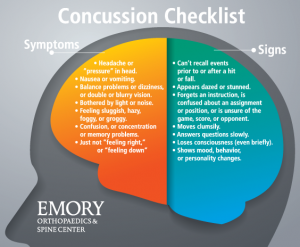 While there is no way to stop the cascade resulting from concussions, symptoms can be regulated with plenty of rest and reduced stimulation. Staying away from screens and intense reading can increase the recovery speed, and help alleviate symptoms like headache and difficulty focusing on things. Rest in this case means not doing things that exacerbate symptoms
While there is no way to stop the cascade resulting from concussions, symptoms can be regulated with plenty of rest and reduced stimulation. Staying away from screens and intense reading can increase the recovery speed, and help alleviate symptoms like headache and difficulty focusing on things. Rest in this case means not doing things that exacerbate symptoms Over fall break this year, I had the opportunity to travel to North Carolina to visit the
Over fall break this year, I had the opportunity to travel to North Carolina to visit the 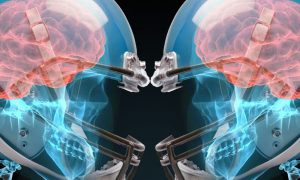 The experien
The experien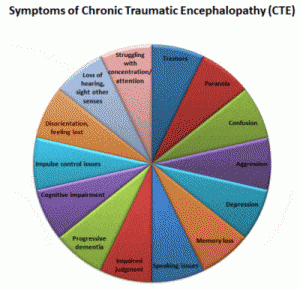 All things considered, society needs to start taking concussions more seriously–it is a brain injury, after all. We tend to think that it is more important to return to playing a sport or return to class than it is to properly care for a concussion. I personally have had experience with a few concussions. Specifically, sophomore year, I was involved in an accident that resulted in a major Traumatic Brain Injury (TBI). I lack any memory for months following the event. The one memory I do have is of sitting in class, about a week post-injury, and trying to take notes. I was nauseous, dizzy, and close to passing out. I had to leave class because I felt so sick. When I looked back on those notes a few weeks later, they were merely scribbles and random lines. I then realized that I should not have forced myself into going back to class so soon. I needed the rest. But society values us for our productivity, whether academically or athletically. When that “go go go” mentality is ingrained in us, it becomes hard to step back and take care of ourselves. This needs to change. Major TBIs and frequent head injury can lead to issues with mental health, cognition, memory, and neurodegenerative disease such as CTE. Just like we would take care of a broken leg, we must take care of our brains.
All things considered, society needs to start taking concussions more seriously–it is a brain injury, after all. We tend to think that it is more important to return to playing a sport or return to class than it is to properly care for a concussion. I personally have had experience with a few concussions. Specifically, sophomore year, I was involved in an accident that resulted in a major Traumatic Brain Injury (TBI). I lack any memory for months following the event. The one memory I do have is of sitting in class, about a week post-injury, and trying to take notes. I was nauseous, dizzy, and close to passing out. I had to leave class because I felt so sick. When I looked back on those notes a few weeks later, they were merely scribbles and random lines. I then realized that I should not have forced myself into going back to class so soon. I needed the rest. But society values us for our productivity, whether academically or athletically. When that “go go go” mentality is ingrained in us, it becomes hard to step back and take care of ourselves. This needs to change. Major TBIs and frequent head injury can lead to issues with mental health, cognition, memory, and neurodegenerative disease such as CTE. Just like we would take care of a broken leg, we must take care of our brains. 